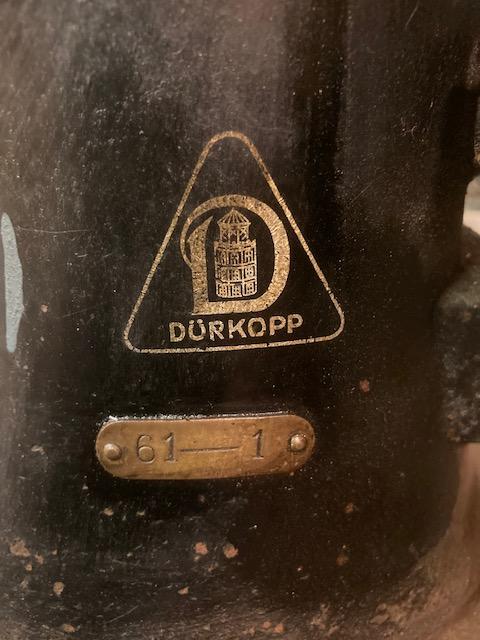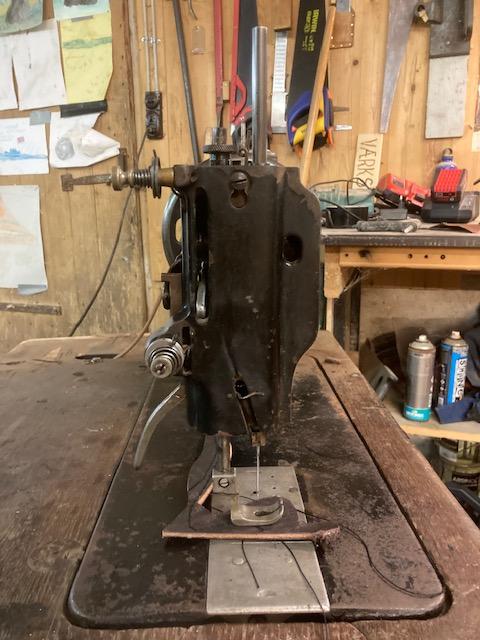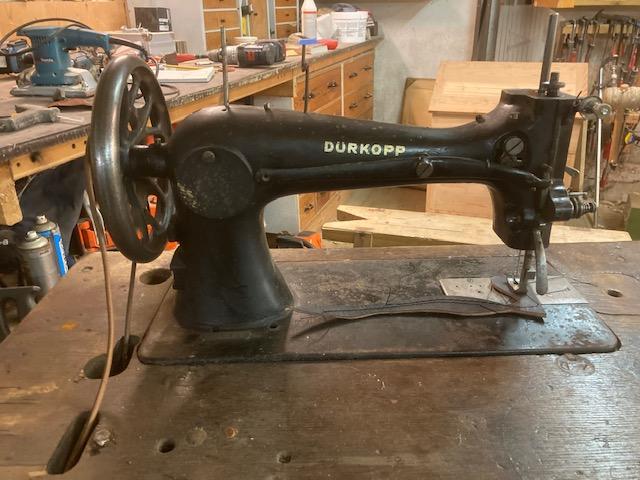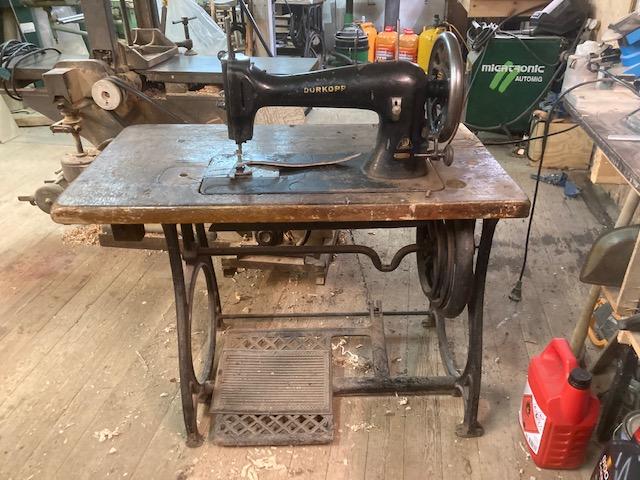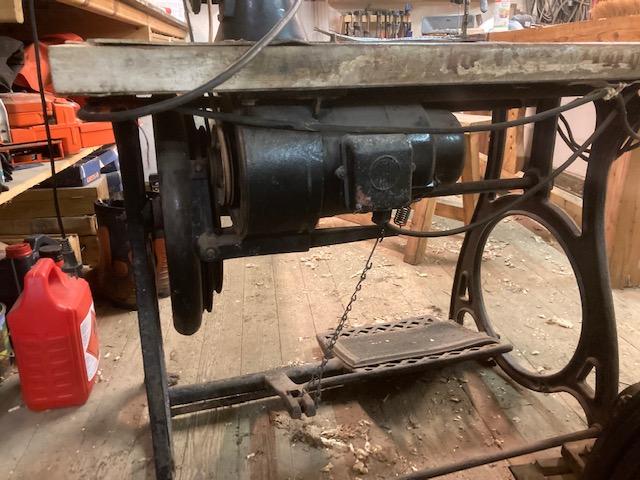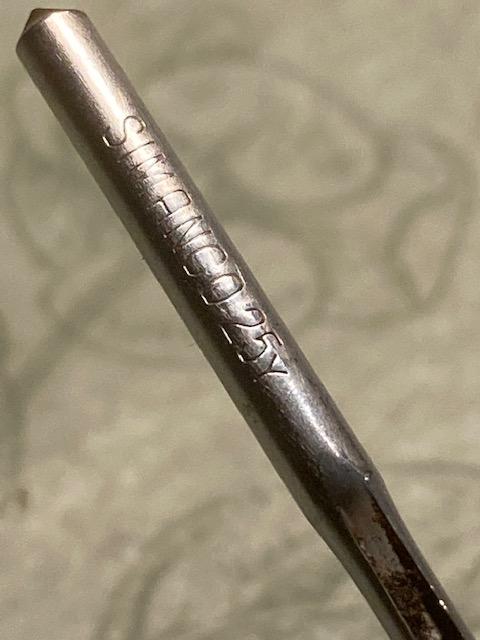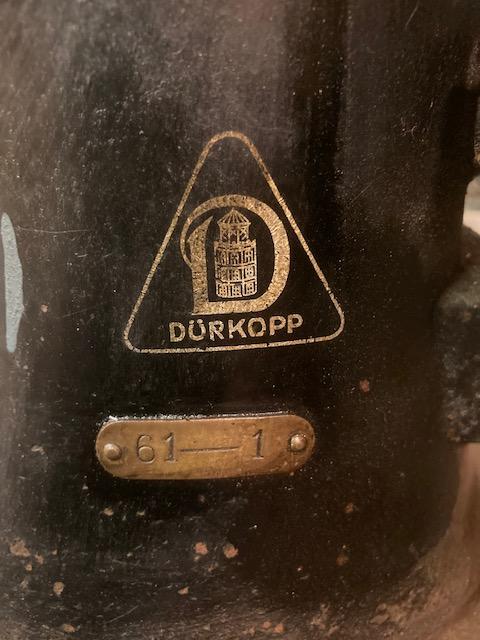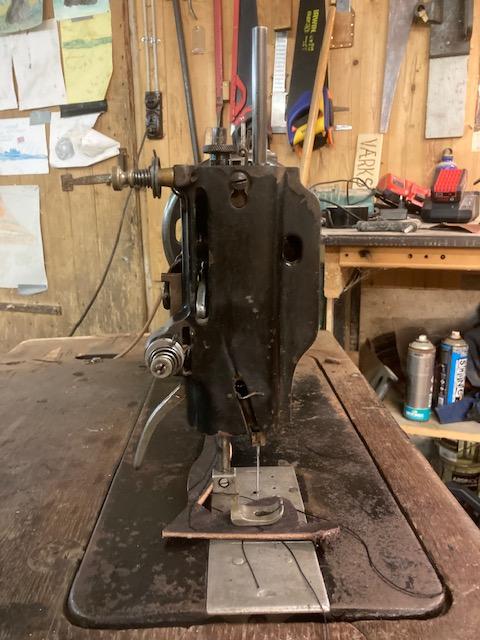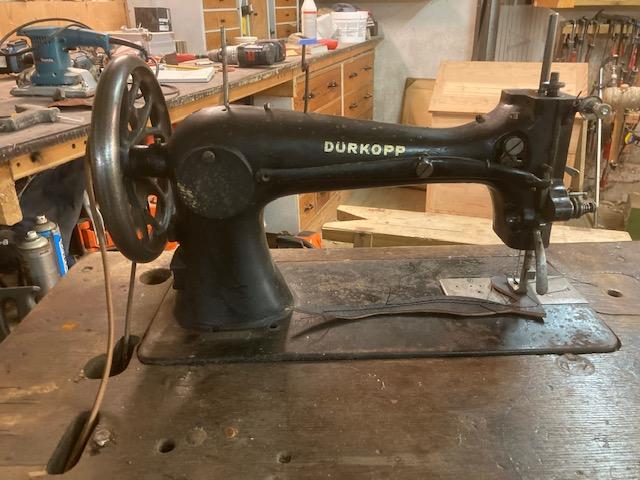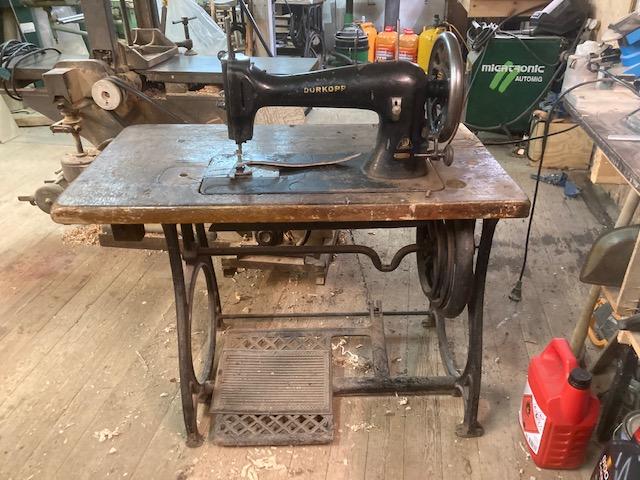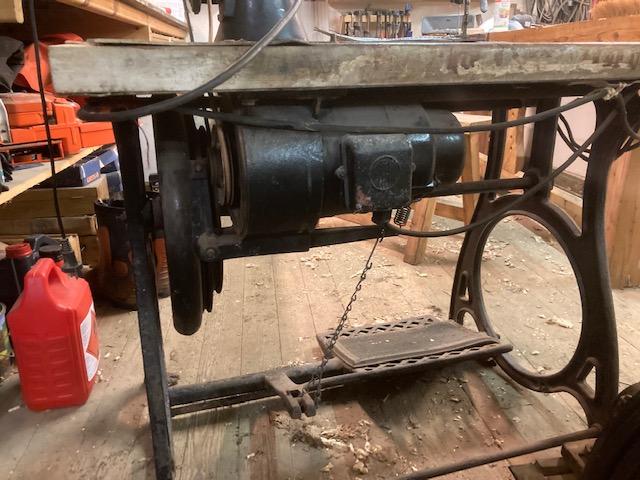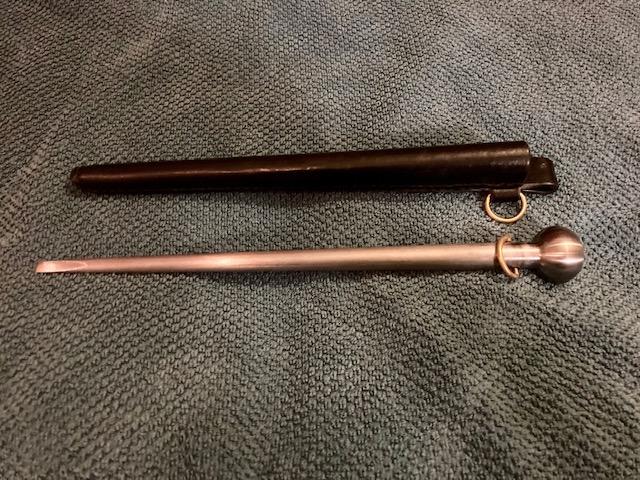-
Posts
756 -
Joined
-
Last visited
Content Type
Profiles
Forums
Events
Blogs
Gallery
Everything posted by Mulesaw
-
@jcuk I checked today, and I could see that on a Stübben saddle we have it is clearly made with a backstitch. But on one of the other saddles (can't remember which one) it really looked as though it was a machine sewn job. I can see the idea in the backstitch, so I'll just use that one in the future. When I repaired the last saddle, I made the holes in the leather first and then just wiggled the needles through the fabric without using an awl for that. Brgds Jonas
-
@55rick Looking really good. Thanks for also showing the underside. I just talked to a friend today. He and his grown up son have managed to find a 1920 Indian Scout as a cardboard box project. I'll probably get the honour of making the seat for that. I was searching for inspiration when I read your post.
-
Hmm, I just changed a couple, and I couldn't really see if they were machine sewn or regular saddle stitched. So I did a regular saddle stitch. It was Kentaur saddle, I don't know if it is the same on other brands? (I suppose I could go out and check on my wife's Passier, but frankly I am too lazy at the moment. :-)
-
@Handstitched How do you charge then, just curious? When I say hourly rate then they only pay for what time I actually use, down to minutes. I just thought that it was much easier to do compared to having rates for changing a buckle, and changing this or that. Because not all buckle changes are equally fast etc. I keep a piece of paper near when I work, and I write the start time and stop time, and any materials I use. First I always make a quick assessment of the blanket, to see what needs to be done, and then I make a loose plan inside my head for how I want to go about the repair job. The assessment also helps so that I am sure that I will fix all the little faults and not accidentally send a blanket out the door where something is still bad/broken. If the owner delivers the rugs / blankets themselves, sometimes they'll say what needs to be done, but often I just get a pile and then I just repair them as I see fit. Most of my customers have come to me because I change zippers in riding boots. That's a great way to get new customers I have found. WHen they come to pick up their repaired boots I always make sure to tell them that I also repair blankets and other tack, such as the straps on a saddle etc. Brgds Jonas
-
My sincerest condolences.
-
I repair a lot of horse blankets. Here is what I have found out: I use a Singer patcher with a homemade table that fits around the arm. It makes it a lot easier to me that I can keep the horse blanket "still" and change the direction of the needle. The blankets should be washed when you get them, otherwise the dust and sand will quickly cause extra wear to your sewing machine. I charge an hourly rate + spareparts/materials. Most of the time the crossing surcingles (50 mm webbing) that goes below the horse are torn off. The front closure is also prone to require some work. My suggestion of spareparts for a start up is: 50 mm webbing, you can start out with 15 m. I just use black. 25 mm webbing for the front closures, 2 m will do for a start. 50 mm velcro, get 2 m. 50 mm buckles for the surcingles, get 15 sets. 25 mm halter type buckes for the front closures, (5 pcs) 25 mm karabiners for the front closures, (10 pcs) (these are often the first thing that needs to be changed on a halter as well) Often if another horse has been biting the blanket, the inside with the padding is torn off. I just use whatever thin fabric I have to repair that on the inside. If it is e.g. a wool blanket with a long open tear, I will put a piece of reinforcement on the inside and sew along the sides of the tear. I often use 50 mm webbing for the reinforcement. If a blanket is too far gone, some parts of it can still be used for spare parts such as webbing or hardware if there is still any of it left. Just be sure to ask the owner if they want it back or if you can buy it for a symbolic sum. Laederiet.dk or pethardware.cz has got all the spare parts that you will need. Have fun.
-
Selling a Dürkopp 61-1 leather sewing machine. It should be very similar to an Adler class 4 sewing machine.' The needle bar has been renewed and the bushings for the needle bar have been reamed to accommodate the new slightly thicker needle bar. There is a coupling motor on the machine, as it is European it will run on 220/230 V 50 Hz. The original large flywheel and treadle pad is still on the machine, so foot power can be restored by making a new connecting rod for the crankshaft and the tread pad. Fair condition given the age of the machine. it sews nice and smooth. The stitch length can be varied up to approximately 3/8". Only straight stitching, no zig zag or reverse. Price 168 US$ (DKK 1100) or 148 Euro (DKK 1100) The machine is situated in Northwest Denmark (Scandinavia) on the island of Mors. There are bridges to the island, so no need for a ferry crossing. If the buyer arranges shipping, I can put the sewing machine on a pallet and secure it for transportation.
-
@ConstabularyThanks Folker, I had hoped that you knew the answer :-) I will try to google for an Adler class 4 to learn a bit more about the machine then. There is precious little information about Dürkopp machines on the Internet compared to e.g. Singer. Brgds Jonas
-
I bought an old Dürkopp 61-1 sewing machine last week. I was hoping for a different machine, but after taking the drive I decided to get it despite not being what I originally wanted. The needle bar and the guide bushings were so worn that needle bar could move 0.5 mm back and forth. I borrowed a reamer from a fiend and enlarged the bushings to 10 mm instead of 9.5 mm. I then made a new needle bar out of a piston rod from a pressurized gas cylinder like those that lift the back door of a car. The sewing machine has at some point been retrofitted with a clutch motor. And that works really well. My only problem now is that I need to find out what needle system the machine uses. There is only one needle in the machine. It says SIMANCO 25Y on it, but that doesn't mean a lot to me. The needle is approximately 60 mm long, and the diameter of the shank is a bit less than 2.5 mm. If anyone of you know what needle system that might be, it would be great. I am not emotionally attached to this machine, so if anyone would like it I'd be happy to let go to a new home.
-
@Wizcrafts That's really good info! I have noticed the twist tendency on my patcher when using some small spools that I got from a regular sewing machine store, I can't remember the brand, but it was heavy duty thread, I would guess it to be similar to a #69 or a Serafil size 40. I'll try to see if I can re-route it the way you suggest. I have no idea of the Amann Serafil is left or right twisted. But so far it has worked, but I don't know if that is just because my sewing machines are old? (Singer class 7 from 1905 and a 29k51 patcher from the 30'ies if I remember correctly)
-
Marlinspike with sheath
Mulesaw replied to Mulesaw's topic in Gun Holsters, Rifle Slings and Knife Sheathes
@chuck123wapati Thanks for the kind words :-) Brgds Jonas -
Marlinspike with sheath
Mulesaw replied to Mulesaw's topic in Gun Holsters, Rifle Slings and Knife Sheathes
Thanks, I doubt that the cops in Denmark would be impressed if you walked along with either a Blackjack or a marlinspike/fid like this one :-) That cable vise sounds sweet! Our bosun has been looking for one of those in ages, but for some reason there aren't many around. We have a large splicing vise that will work best for cables of 1" to 1.75" (as far as I remember) Brgds Jonas -
Marlinspike with sheath
Mulesaw replied to Mulesaw's topic in Gun Holsters, Rifle Slings and Knife Sheathes
Thanks, It is so satisfying to make something that you can use for a special task. I haven't spliced in many years, at least not in cable, but I still remember how to do it. I probably just isn't very fast at it :-) Brgds Jonas -
Marlinspike with sheath
Mulesaw replied to Mulesaw's topic in Gun Holsters, Rifle Slings and Knife Sheathes
Thanks :-) I think it came out OK as well. Brgds Jonas -
Latest holster
Mulesaw replied to gregintenn's topic in Gun Holsters, Rifle Slings and Knife Sheathes
Looks really good. -
This time on board I decided to make a marlinspike for myself. And a sheath for it as well. The marlinspike is turned on the lathe from an old steel bolt for fastening the cylinder head to the main engine. It is just shy of 12". The ball end is 1.25" in diameter, and the body tapers from 19/32" to 1/4" right at the tip. In addition to being conical, the body gradually becomes oval nearing the tip of the marlinspike. A D-ring of bronze was silver soldered in place in the shaft, and I made a similar D-ring that could be mounted on the sheath so that the safety lanyard can attach directly to the sheath. There are different rules on different ship regarding the safety lanyard. Some ships require the lanyard to end around your belt only, but others will allow you to fasten it to such a D-ring. The sheath is made with a flat back. A wedge shaped piece of leather was sewn on it for two reasons. First it would move the marlinspike a bit outwards, which in my thinking will cause it to clear the hip of the wearer just a bit. Second - it would give a backing rabbet for the round outer part to register to. The outer part was cut wedge shaped, so that the sheath tapers in thickness as well as in width all the way. I sewed it on using diagonal through stitches (or whatever they are called). Entry on the side and out through the back. After sewing the sheath, I wanted to trim the little bit of surplus leather along the sides, but due to crappy weather and bad illumination of the workplace, one side messed up a bit. I had to redo a couple of stitches, and it doesn't look quite as nice as I had imagined. But with a bit of wear and tear it will look all right I think.
-
Reining Chaps with filigree
Mulesaw replied to FrenchMich's topic in Saddle and Tack Accessory Items
Really nice work! -
Thanks a lot :-) That was just what I was looking for. When I bought needles for my machines, I just sort of picked different sizes so I had some of both ends of the specter, not knowing if a size 80 needle was bigger or smaller than a size 110. The smaller bobbin thread thing I have never tried, I have just seen it mentioned here a couple of times and thought that I most likely missed out on something. But I think I'll just keep on using the same size thread for top and bottom. Again thanks for helping. Brgds Jonas
-
Like the title says, can anyone give some sort of explanation about the thread size used for sewing machines? I have tried searching the forum, but still haven't found an answer. I read about #504 and#207, #74 etc, and I have to admit that I don't understand any of it. Apparently someone uses a thinner thread for the bobbin than for the upper thread, but again without the knowledge I'm just using the same size in both which might not be the optimal solution. The thread that I buy doesn't even have those numbers put on them, so I just try to guess my way. So far I use the Serafil 10 on the old harness stitcher, and Serafil 40 for the patcher. But I would like to know if anyone has got a chart that would compare the European sizes with the # sizes. Or if someone can link to an old thread that will explain it :-)
-
Like the others said, please let us see it :-)




